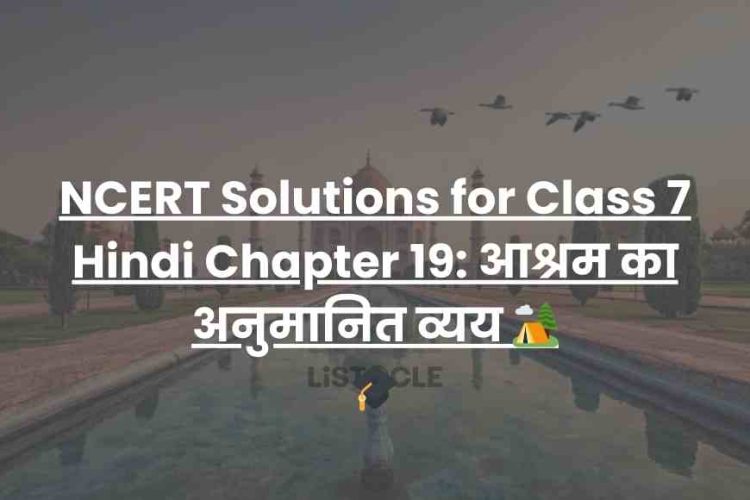
Sanskrit, the language of gods, is often considered a challenging subject, especially for Class 6 students. But don’t worry! With the right resources and a bit of humor, learning Sanskrit can be as fun as a Bollywood dance number! 😄 Today, we’ll take you on an exciting journey through the NCERT Solutions for Class 6 Sanskrit and make sure that Sanskrit doesn’t feel like a dreaded exam but rather a fun ride!
Table of Contents
- Chapter 1: वयं वर्णमालां पठामः
- Chapter 2: एषः कः ? एषा का ? एतत् किम् ?
- Chapter 3: अहं च त्वं च
- Chapter 4: अहं प्रातः उत्तिष्ठामि
- Chapter 5: शूराः वयं धीराः वयम्
- Chapter 6: सः एव महान् चित्रकारः
- Chapter 7: अतिथिदेवो भव
- Chapter 8: बुद्धिः सर्वार्थसाधिका
- Chapter 9: यो जानाति सः पण्डितः
- Chapter 10: त्वम् आपणं गच्छ
- Chapter 11: पृथिव्यां त्रीणि रत्नानि
- Chapter 12: आलस्यं हि मनुष्याणां शरीरस्थो महान् रिपुः
- Chapter 13: सङ्ख्यागणना ननु सरला
- Chapter 14: माधवस्य प्रियम् अङ्गम्
- Chapter 15: वृक्षाः सत्पुरुषाः इव
Chapter 1: वयं वर्णमालां पठामः
In Chapter 1, we start with the basics – learning the Sanskrit alphabet (वर्णमाला). It’s like learning the ABCs, but with a twist of ancient charm. The chapter explains how we pronounce and write letters. So, when you’re learning how to say “अ” or “आ”, remember it’s all about mastering the sound and feeling like a Sanskrit pro! 🎤✨
Chapter 2: एषः कः ? एषा का ? एतत् किम् ?
In Chapter 2, the focus is on questions. Sanskrit questions are not as scary as they sound! The chapter introduces basic question words like एषः कः? (Who is this?) and एषा का? (Who is she?). If you’ve ever wanted to ask someone about their mysterious pet or that cute cat in the neighbor’s garden, now you can do it in Sanskrit! 🐱
Chapter 3: अहं च त्वं च
In Chapter 3, the chapter revolves around the pronouns अहं (I) and त्वं (You). It’s a fun way of learning how to introduce yourself and ask others about their identity. It’s basically the foundation of small talk, Sanskrit-style! 😉
Chapter 4: अहं प्रातः उत्तिष्ठामि
Waking up early – अहं प्रातः उत्तिष्ठामि means “I wake up in the morning”. So, if you’re not a morning person, this chapter might motivate you to set your alarm a little earlier! ⏰ (Or, at least pretend like you’re an early riser). 😉
Chapter 5: शूराः वयं धीराः वयम्
This chapter, Chapter 5, is all about courage. शूराः वयं धीराः वयम् means “We are brave, we are courageous.” It’s perfect for students who want to feel empowered while studying Sanskrit! Let this be your motivational mantra. 💪🔥
Chapter 6: सः एव महान् चित्रकारः
In Chapter 6, we talk about a great artist. सः एव महान् चित्रकारः means “He is a great artist.” If you’ve ever admired the Mona Lisa or the latest TikTok artist, this is a great way to express your admiration in Sanskrit! 🎨
Chapter 7: अतिथिदेवो भव
Atithi Devo Bhava, meaning “The guest is God”, is the essence of this chapter. It emphasizes the importance of hospitality and respect towards guests. So, next time someone comes over to your house, greet them like royalty! 👑✨
Chapter 8: बुद्धिः सर्वार्थसाधिका
In Chapter 8, we focus on बुद्धिः सर्वार्थसाधिका, which means “Intelligence is the key to achieving all things.” If you’ve ever needed an excuse to be a little more “brainy,” this chapter has got you covered! 🧠💡
Chapter 9: यो जानाति सः पण्डितः
If you know something, you’re a scholar! यो जानाति सः पण्डितः means “He who knows, is a scholar.” So, next time you answer that tricky Sanskrit question in class, you can confidently call yourself a पण्डित (pandit). 🧐👨🏫
Chapter 10: त्वम् आपणं गच्छ
Heading to the market? त्वम् आपणं गच्छ means “You go to the market.” Whether you’re buying vegetables or a new phone, this chapter helps you speak about daily activities in Sanskrit. 🛒📱
Chapter 11: पृथिव्यां त्रीणि रत्नानि
पृथिव्यां त्रीणि रत्नानि means “There are three gems in the world.” It’s not about diamonds or gold, but virtues like truth, knowledge, and courage. 🌍✨ This chapter helps you understand the deeper meaning behind the “gems” of life!
Chapter 12: आलस्यं हि मनुष्याणां शरीरस्थो महान् रिपुः
In Chapter 12, we’re learning about the dangers of laziness: आलस्यं हि मनुष्याणां शरीरस्थो महान् रिपुः – “Laziness is a great enemy of humans.” So, time to leave procrastination behind and get productive (Sanskrit homework included)! 😅
Chapter 13: सङ्ख्यागणना ननु सरला
In Chapter 13, we talk about counting numbers in Sanskrit. सङ्ख्यागणना ननु सरला means “Number counting is easy.” And trust us, it is! After this chapter, counting from one to ten will feel like child’s play. 🧮
Chapter 14: माधवस्य प्रियम् अङ्गम्
Chapter 14 takes a turn into the world of affection with माधवस्य प्रियम् अङ्गम्, meaning “Madhav’s favorite part (or limb).” Whether it’s a favorite book or a cozy blanket, this chapter shows how to express what you love in Sanskrit! ❤️
Chapter 15: वृक्षाः सत्पुरुषाः इव
In Chapter 15, we are comparing trees to good people: वृक्षाः सत्पुरुषाः इव – “Trees are like good people.” If you’ve ever hugged a tree or had a heart-to-heart with your house plant, this chapter will resonate! 🌳💚
Wrapping Up Your Sanskrit Adventure
And there you have it, a fun-filled, adventurous guide to NCERT Solutions for Class 6 Sanskrit! 🌟 Whether you’re learning the alphabet, asking questions, or discussing profound topics like the virtues of intelligence, Sanskrit has something exciting for everyone. So, let’s not make this subject a daunting mountain to climb but rather a fun and educational treasure hunt! 🏆
And remember, Sanskrit is a lot like life – sometimes it’s challenging, but with the right attitude, it can be pretty rewarding. So, keep practicing, stay curious, and who knows, you might just become a Sanskrit pro in no time! 🎓📚




